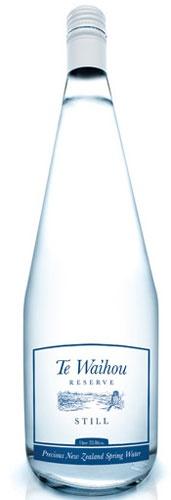
Te Waihou Water Analysis:
| Balance | Still & Light |
| Virginality | Superior |
| Minerality | Low |
| Orientation | Neutral |
| Hardness | Soft |
| Vintage | 100 Years |
| Carbonation | Added |
| TDS | 129 mg/l |
| ph factor | 6.8 |
| Hardness | 13 mg/l |
| Nitrate | 0.46 mg/l |
| Calcium | 2.62 mg/l |
| Magnesium | 1.47 mg/l |
| Sodium | 8.52 mg/l |
| Potassium | 3.86 mg/l |
| Silica | 77.8 mg/l |
| Bicarbonate | 18 mg/l |
| Sulfate | 2 mg/l |
| Chloride | 5.7 mg/l |
| Source: | Spring |
| Location: | |
| Country of Origin: | New Zealand |
| Region: | North Island |
| Place: | Putaruru |
| Established: | 2009 |
| Company: | |
| Status: | Not a Member of the Fine Water Society |
| Web Site: | |
| phone: | |
| email: | |
| Social Media: |
Te Waihou means 'new water' and the journey the new water takes begins high in the Mamaku Ranges, a range of rugged hills in the North Island of New Zealand. Located to the west of Lake Rotorua and north of Lake Taupo, they lie to the immediate south of the imposing Kaimai Ranges which stand tall and watch over the east and western sides.
From the ancient eruptions that created Lake Rotorua, layered aquifers were created within fractured rock and volcanic sand. Rainfall recharge from the Mamaku Ranges moves rapidly through the surface sandy soils, then deep into the aquifers that discharge into our source, the Blue Spring some 80 to 100 years later and eventually into the Waihou River on the edge of the plateau.
